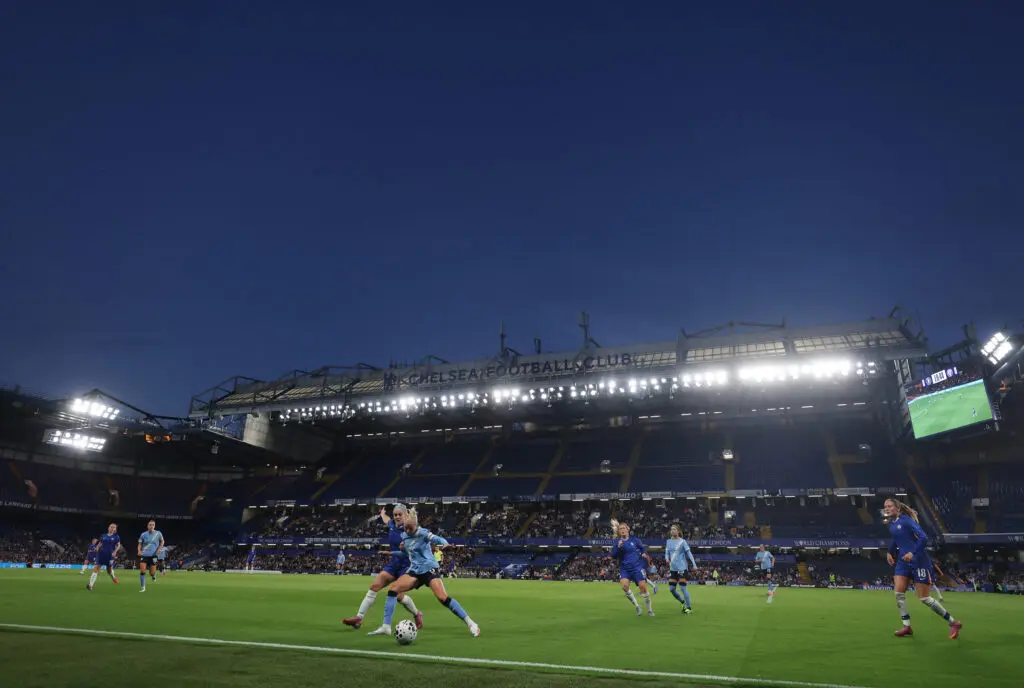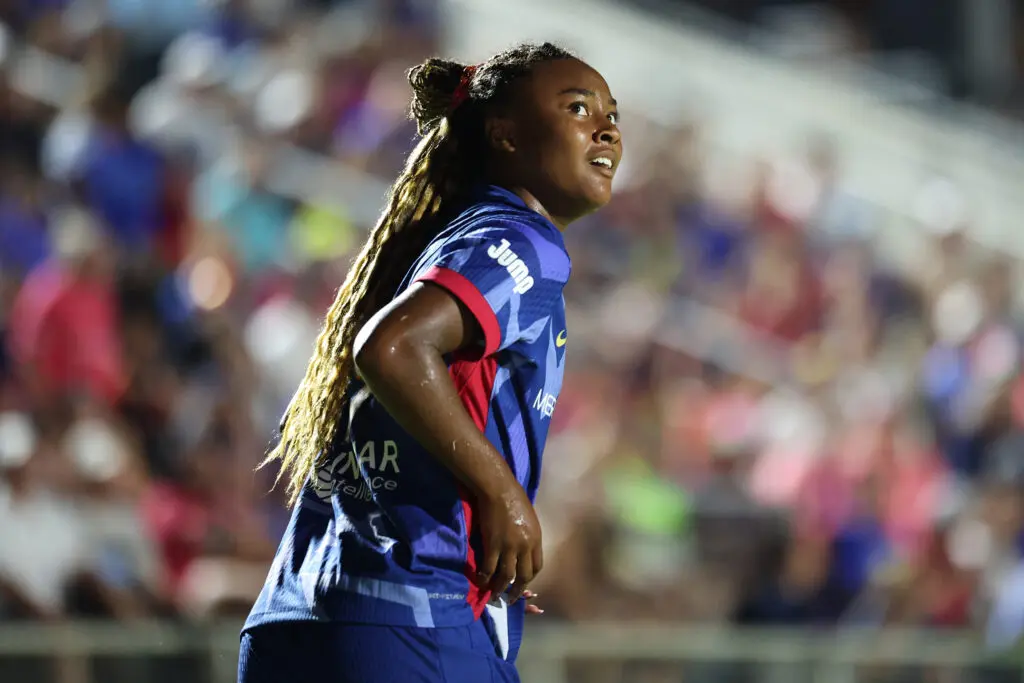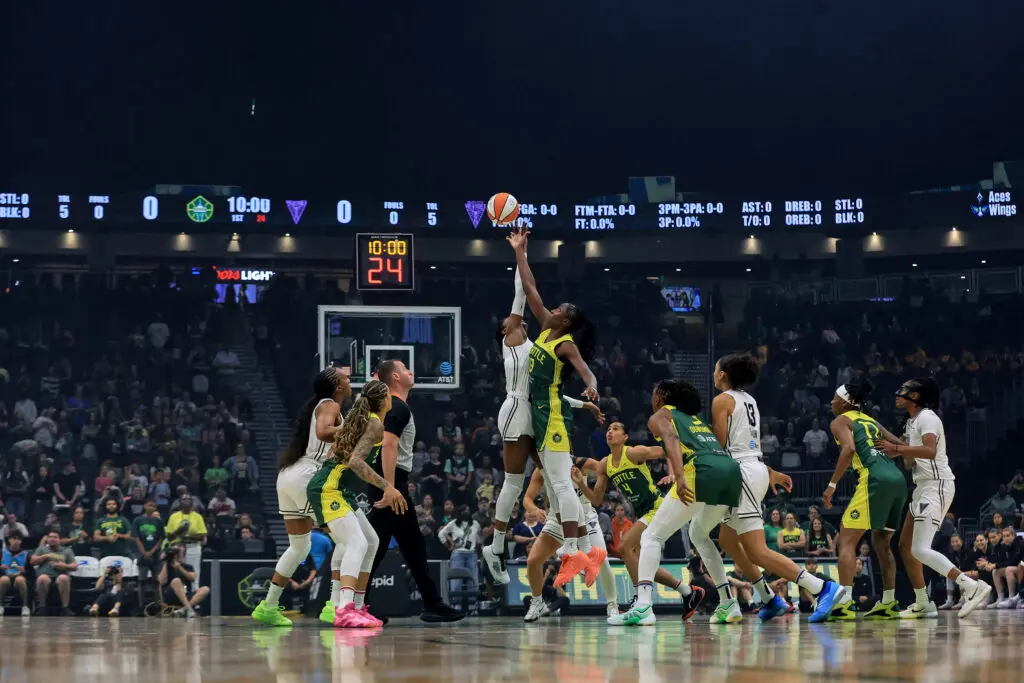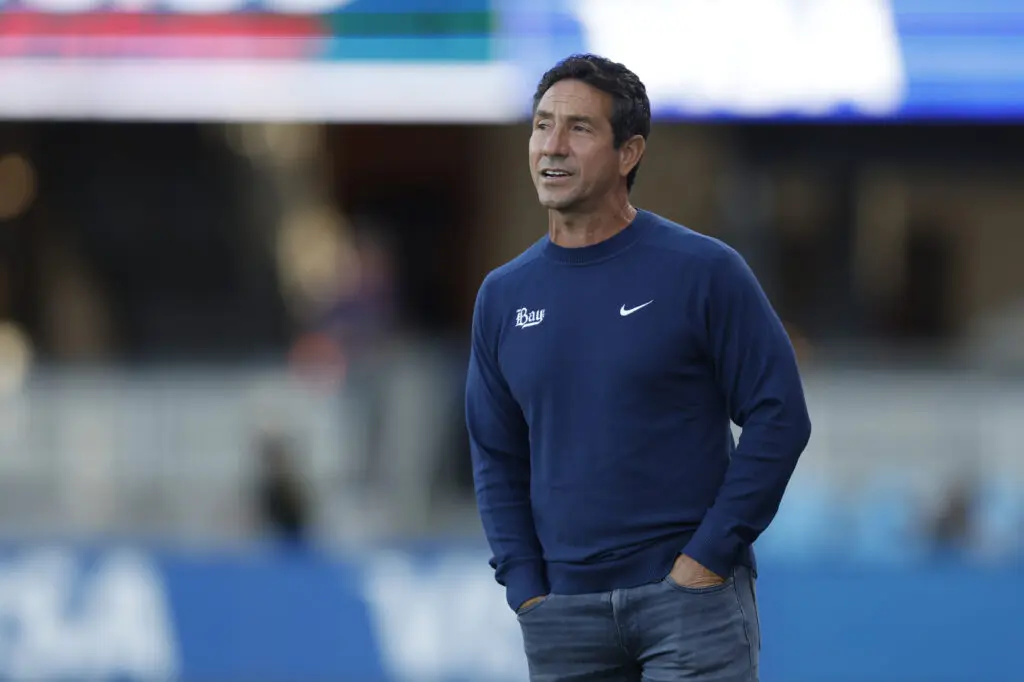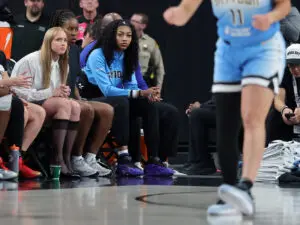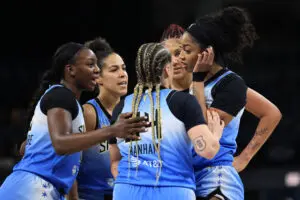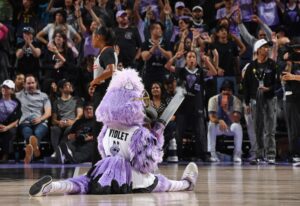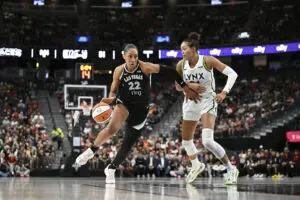The United States women’s national team finished their series of September friendlies against Nigeria this week, with one dominant performance and one much closer scoreline.
With all eyes on the World Cup next summer, the U.S. took some important steps forward while also showing their hand for the months ahead, including a crucial friendly against Euro champions England on Oct. 7. Here are our biggest questions coming out of the USWNT’s most recent results:
Is the player experimentation period over?
During the Concacaf W Championship, the USWNT roster struck a balance of veteran leadership and new faces due to both unforeseen absences and a desire to add youthful creativity to the squad. That group expertly navigated World Cup qualifying, winning the title over rivals Canada without conceding a single goal in the tournament.
While qualifying was by all quantifiable measures a success, roster tinkering is still expected as the team moves into its final year of World Cup preparation. At the top of the priority list for the U.S. are identifying defensive midfield strengths, making decisions at outside back and addressing goalkeeper depth. The question of the center forward position also remains eternal, as the team waits for generational talent Catarina Macario to return from an ACL injury.
With a number of NWSL players unexpectedly rising in form, and other U.S. nationals performing well outside of the domestic league, September seemed like a good opportunity for coach Vlatko Andonovski to tweak the group of players on the bubble. Instead of bringing new players into camp, however, he made very few changes between the July and September rosters.
Andonovski’s ideology seems to prioritize chemistry over sheer form, despite a renewed commitment by U.S. Soccer to operate otherwise. That chemistry was on scintillating display at times this past week, but the USWNT did ultimately leave players off of September’s roster who have been performing well, and brought in players with high ceilings who have been underperforming for their clubs.
Andonovski showed his preference for the World Cup qualifying group over former champions Abby Dahlkemper and AD Franch. He also called up midfielder Sam Coffey, the 24th person in for Concacaf, while leaving North Carolina Courage outside back Carson Pickett at home.
These small roster moves create a bigger picture that indicates the USWNT might be done evaluating new players, and is more committed to cohesion while waiting for other key contributors to return. With the World Cup still months away, and the team not necessarily dominating competition, that level of tunnel vision could be a mistake. One simply has to look at the way Macario’s injury upended the team’s attack right before a crucial part of the calendar, highlighting how a lack of versatility can undermine the depth of the player pool.

Is the formation set?
Andonovski has been married to the 4-3-3 formation ever since taking over the team in 2019 and hasn’t experimented much with other formations outside of emergencies. Sticking strictly to one system isn’t always conducive to national team play, since simply getting the best players on the field at once can be paramount. Especially if the U.S. isn’t bringing new players into camp, they could stand to develop the versatility of their style of play.
Against Nigeria, the starting XI mirrored that of the Concacaf W championship game, but the team appeared to employ slight formational changes.
With the current 4-3-3, the USWNT at times struggles to shore up its spine down the middle while creating room for all of its best attacking talent. While Lindsey Horan and Rose Lavelle can run box-to-box, the U.S. midfield frequently plays in what you might envision as an upside-down triangle, with one defensive midfielder holding court and two attacking midfielders pushing forward into the final third. All too often, however, that midfield gets bypassed in favor of the center backs distributing the ball either out wide or up to the forwards.
In the games against Nigeria, it appeared the team was experimenting with different ways to create overloads and get the midfield more involved. At times, Sophia Smith would drift behind Alex Morgan when the U.S. had possession, allowing Lavelle to shift to the right and creating an overload on that side. Together, they opened up channels that we didn’t see from the USWNT in Monterrey, and they resisted the impulse to slow down unnecessarily when their center backs were distributing the ball.
One touch is all it takes for @sophsssmith!
— U.S. Women's National Soccer Team (@USWNT) September 3, 2022
🎥 @FOXSoccer pic.twitter.com/vq6rzk92AM
Smith performed well in the role, scoring a brace in game one, but Andonovski could also be saving that underlying striker option for Macario’s return. Macario and Morgan play the No. 9 position very differently, giving the U.S. a chance to present opponents with varied starting looks when both are healthy.
But with a player underneath her, Morgan actually has the room to employ her full skill set, including her off-the-ball work that has flown under the radar for years. It opened up scoring opportunities in both of the games against Nigeria, including Lavelle’s game-winner on Tuesday when Mallory Pugh was filling the underlying striker role.
Those slight changes don’t necessarily reflect the wholesale experimentation fans might be looking for, but they do at least present the next step in building roster cohesion from a sometimes tepid attack in July. The starting group looked in sync against Nigeria, and they’ll need that level of creativity to unlock England in October.
What does this week say about next year’s roster?
Despite the lack of overall roster rotation since Concacaf, the U.S. appears to have both a settled core and number of questions still to answer.
The USWNT’s preferred starters in the first Nigeria match performed well on every line. That group controlled the match comfortably, and if the game was a simulation of a World Cup group stage match, they executed in a way you’d expect from the No. 1 team in the world.
The second half of that match — and much of the second game — showed just how much uncertainty there is about the rest of the squad. Getting Coffey acclimated to the defensive midfield at the international level appears to be a priority, with the 23-year-old playing a full 90 in her USWNT debut. Sofia Huerta was excellent in game one, but a missed-timed header in game two created space for Uchenna Kanu’s equalizer and laid bare her lingering defensive discomfort.
Midfielder Taylor Kornieck, called up for both World Cup qualifying and September friendlies, saw no playing time this week and does not seem to be high on the current depth chart. Megan Rapinoe is a preferred 60th-minute sub, and she showed why after earning the assist on Lavelle’s game-winner on Tuesday. Hailie Mace, brought in after an injury to Kelley O’Hara, got time at left back in both games, but Emily Fox has appeared to cement her starting spot at the position.
73 SECONDS.
— U.S. Women's National Soccer Team (@USWNT) September 6, 2022
That's all it took for @mPinoe to find @roselavelle to give us the lead! #USAvNGA x @Allstate pic.twitter.com/yDFzCOJ5Pg
Ultimately, this week was about the starters more than it was about determining depth. Roster stability is important, but it would still be fair for USWNT fans to look at the team 10 months away from a major tournament and say, “Is this it?”
The answer is both yes and no. Crystal Dunn is very close to returning to play, and it couldn’t come at a better time for the USWNT. Dunn is not only a positive locker room force, but she also can play the No. 8, push forward in the attack, or even take over either outside back position. Her presence in camp this week served as a reminder that there are very talented players still working their way back to the team.
And if anything, this summer has shown that there’s room for them on the roster. It’s hard not to look at the current USWNT defense and wonder what it might look like with Tierna Davidson at the height of her powers, or what the midfield with Sam Mewis could become. Macario, Christen Press, Lynn Williams, Trinity Rodman and others will give the USWNT coaching staff much to consider when selecting the final attacking group.
What we also learned from the USWNT’s path to the 2019 World Cup roster is that it’s still too early to count anybody out. USWNT-capped players like Jaelin Howell, Dahlkemper, Franch, Julie Ertz and even Tobin Heath could all see their numbers called depending on the needs of the team.
England will present the U.S. with the sternest test it’s seen this year, and if that game doesn’t go the USWNT’s way, there are plenty of players waiting in the wings.
Claire Watkins is a contributing writer at Just Women’s Sports covering soccer and the NWSL. Follow her on Twitter @ScoutRipley.

